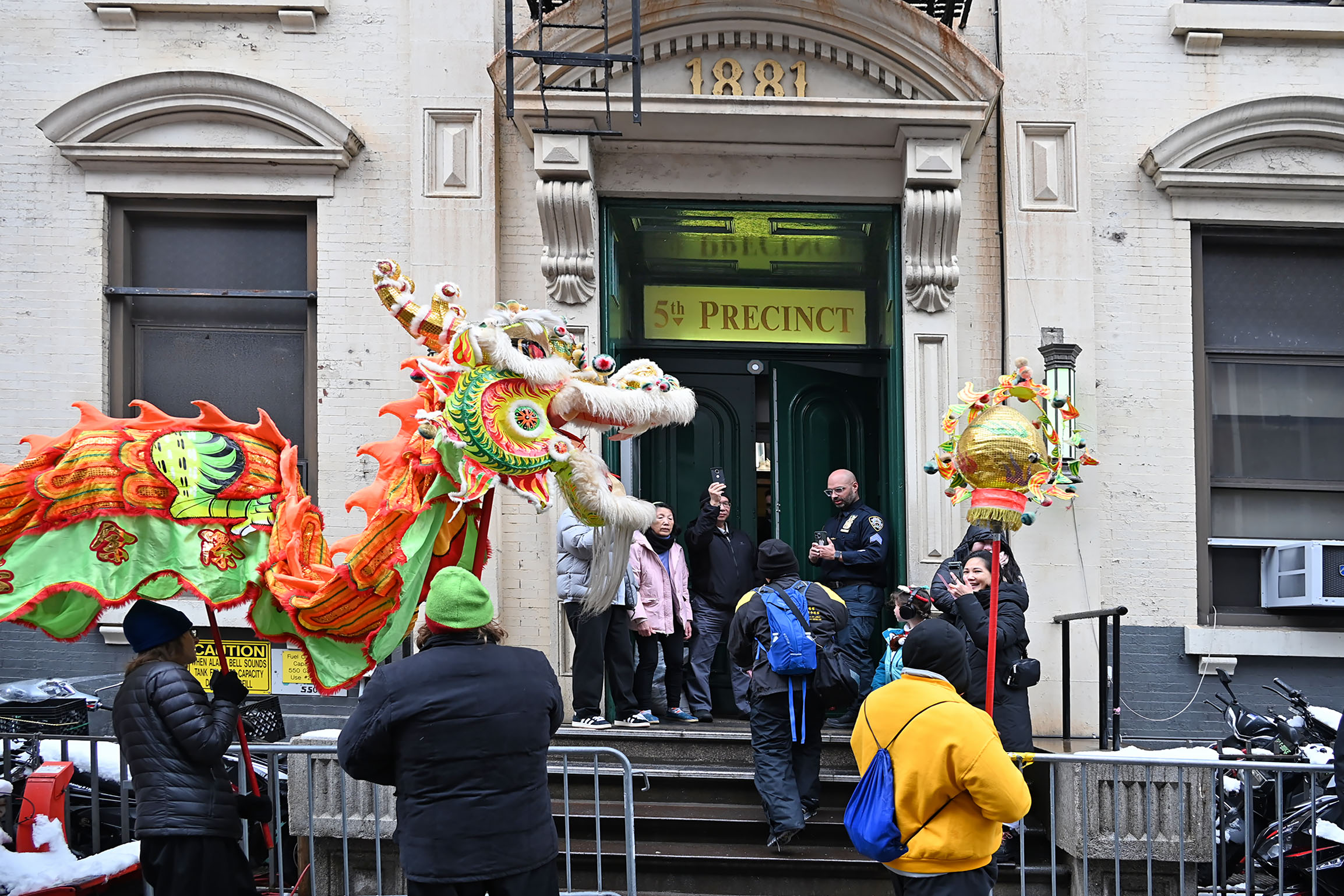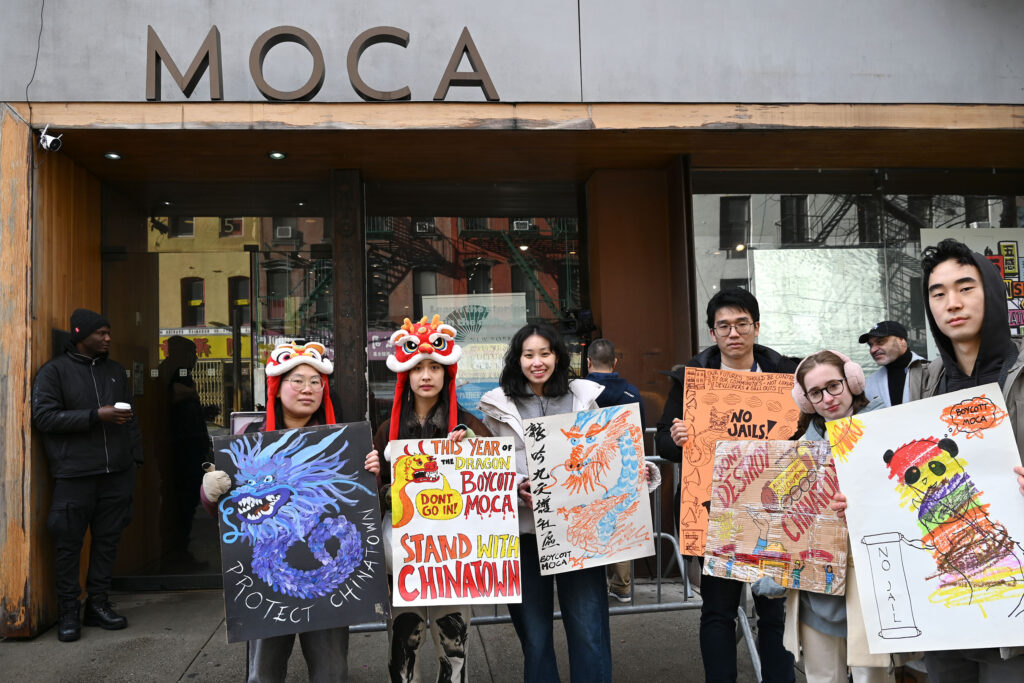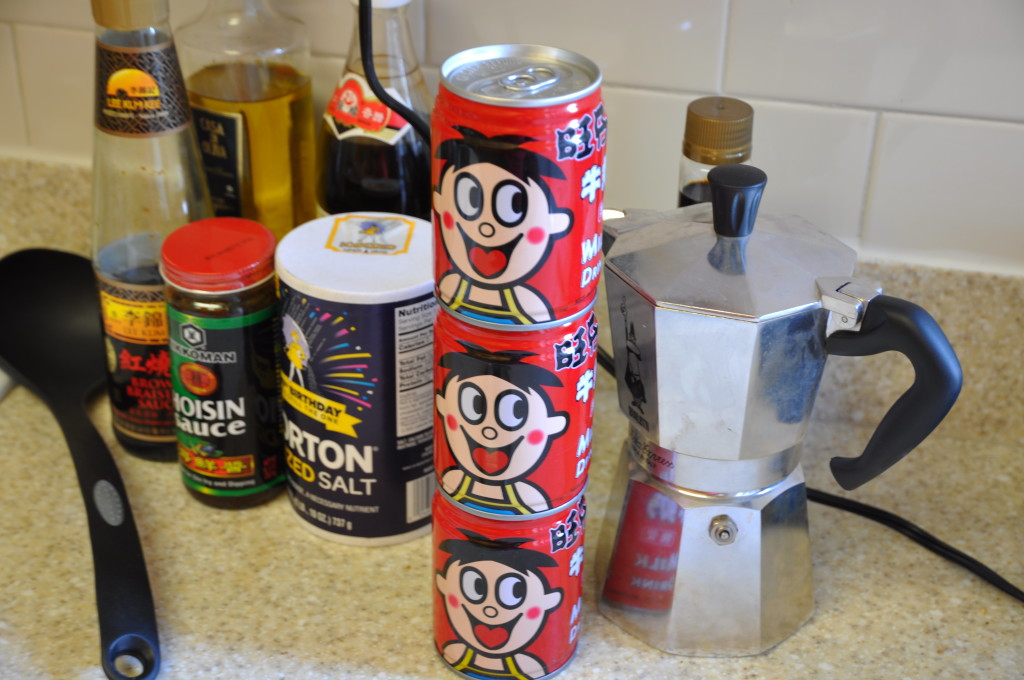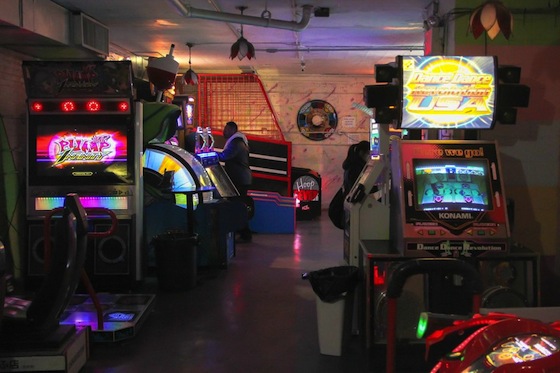With plans for a new jail in Chinatown underway, community trust in the police erodes.

Every Lunar New Year, Manhattan’s Chinatown overflows with crowds of locals and tourists alike. They marvel at dancing lions eating cabbage and tossing oranges, the firecrackers popping in the night and leaving their acrid smell in the day, and the clouds of confetti glittering in the sunshine. But in February 2024, buildings and cars were also coated in the dust of demolition. The joyous sounds of drums celebrating the year of the dragon came just days after the neighborhood was filled with the bangs of demolition at 125 White Street.
Since 2022, New York City has been tearing down the Manhattan Detention Complex on 125 White Street, colloquially known as “the Tombs.” The city plans to replace it with what is expected to be, at about three hundred feet, the world’s tallest jail. The new jail is part of the city’s larger “historic decarceration plan” to close the Rikers Island jail by 2027 and replace it with four jails in all the boroughs except for Staten Island, which is majority white. The city council approved the plan in 2019, which it presented as an opportunity to build “humane” jails, reduce the jail population, and “enhance the network of support systems for people who are detained and help prevent reincarceration.”
Many in Chinatown have protested against the proposed jail in Manhattan, citing concerns about the survival of local businesses, food safety, and the environment. Chinatown, which was socioeconomically impacted by the COVID-19 pandemic, has already seen local businesses close because of the Chinatown jail. In March 2024, Chinatown residents also reported that the demolition of the Tombs has caused flooding and cracked buildings, including one that houses a low-income senior housing, a health clinic, and a daycare center. Many activists are also protesting against the jail as part of a wider call to abolish prisons.
Betty Yu, a co-founder of Chinatown Art Brigade, has been mobilizing against the jail since the announcement of the plan in 2019. “There is no such thing as a humane jail,” she says. “They were billing these four jails as these pioneers of what justice-oriented jails could look like, which we know doesn’t exist. It is an oxymoron. This is not the way to rehabilitate folks.”
While many Chinatown residents are united against the jail, some Chinatown leaders continue to meet with elected representatives and fight for influence over the design of the jail, while others reject such partnerships with city officials.
Some who protest the jail argue that it will lead to an increased police presence in the neighborhood, leading to more arrests and increased tensions between the community and the police. The police presence at protests against the jails has already raised concerns. In April 2022, Jan Lee, the cofounder of Neighbors United Below Canal (NUBC), led a protest against the jail’s construction, at which ten people, including Lee, were arrested. All were arrested for civil disobedience after blocking construction vehicles from making their way to the site.
Since 2021, protestors against the jail have also picketed every week in Chinatown outside the Museum of Chinese in America (MOCA). They bang drumsticks against upside-down empty white Kikkoman soy sauce buckets. They hold signs that read “Protect Chinatown” and “Boycott MOCA.” (I attended the picket both on March 12, 2023, and February 17, 2024, to document the protest. I stood with the picketers, but I didn’t join the chants or hand out flyers.)

The protestors decry the museum for accepting $35 million dollars as part of the city’s plan to build the jails, which included investments in the neighborhood. MOCA has stated that these funds specifically went toward buying their building and protecting the museum’s future. But when the news was announced in late 2019, many accused the museum of selling out Chinatown. As part of its response, MOCA released a statement in January 2021 stating it “is and has always been unalterably opposed to building a jail in Chinatown.”
Those protesting outside of MOCA are also speaking out against the March 2021 closure of the dim sum parlor Jing Fong, which led to more than a hundred people losing their jobs. The protestors single out MOCA’s board cochair Jonathan Chu, whose family was the landlord of the restaurant. In response, Chu has stated that it was Jing Fong’s owners who decided to close the restaurant. MOCA has also stated it is “not tied to Jing Fong in any way.”
While pickets are protected by the first amendment, activists protesting outside of MOCA allege that they have become a target of law enforcement. On May 15, 2022, they were ticketed for excessive noise, a charge they say was later dismissed because the police didn’t have the tools to measure decibels to corroborate the ticket. “MOCA repeatedly called the cops on us that summer [of 2022],” recalls Aaron Yin, one of the protesters and a member of Youth Against Displacement, a community group of the “young and young at heart fighting the overdevelopment and displacement of NYC.”
MOCA president Michael Lee confirms that the museum and several of its neighbors did contact the police that summer regarding noise complaints. He said they also did so because protestors were preventing visitors from entering the museum by blocking the entrance. “The freedom to protest is one of the rights we cherish in the United States, one that many of our parents and ancestors gained by immigrating,” says Lee. “However, it must be exercised peacefully and respectfully, without obstructing access, damaging property, or harming visitors or staff. When that is not the case—as in these incidents—the Museum deemed it best to contact the local authorities.”
The protestors, meanwhile, deny blocking the entrance. They say their protests, which they document on Instagram, have always been peaceful. “The only violence enacted was through MOCA who called the cops on the picket line multiple times,” says Yin. Yin also points to an incident the year before in 2021 when a MOCA staffer put his hands on the waist of a female protester and “pushed her forward.”
Protestors say that the police presence at protests outside of MOCA in the summer of 2022 put them at risk. “The police have constantly harassed us,” says Vicki Niu, another member of Youth Against Displacement and a Chinatown local, who has organized and attended several of the weekly pickets. “They would issue summons and confiscate our drums only when there were immigrant workers on the picket line. When the younger English-speaking people were there, they wouldn’t bother us.”
The Margins reached out to the New York Police Department for comment and did not receive a reply by the time of publication.
Jan Lee, a resident of Chinatown who often documents the experiences of his neighbors through NUBC, believes that law enforcement targeting immigrants who don’t speak English is common in Chinatown. “The pushcart vendors are constantly harassed and thrown in jails,” says Lee. “[They] have all their belongings thrown in a paddy wagon while not speak[ing] English. Routinely, this [is] done.” Across the city, ticketing of street cart vendors doubled in 2022 compared to 2019, with immigrant neighborhoods receiving the most tickets.
Megan Watson, a community organizer, describes observing a similar dynamic when she visited Chinatown in February 2021. On Broadway and Canal, she witnessed the police arresting an elderly street vendor. “She was selling normal things that people sell there like scarves, wallets, handbags, that kind of stuff,” says Watson. “The undercover plainclothes officer was putting the stuff that they were using as evidence into bins. There were two cops there and one cop car.” Watson perceived the cops to be white. When they took the street vendor away, Watson attempted to engage with the woman’s husband, but had difficulties because he did not speak English. “Who knows if they even read her her rights,” she says.
These stories are part of a history of police harassment and brutality in Chinatown, in a city with a long history of racialized policing that disproportionately targets Black and Brown residents.
Jan Lee recalls being detained by police in 2006 when he photographed two law enforcement cars that were parked in front of a fire hydrant. He says a plainclothes officer hit him on the shoulder repeatedly, then flashed his badge before detaining him. “He grabbed me by the arm and slammed me against [a] metal gate,” Lee says. The officer then forced Lee to kneel. “He handcuffed me, took my camera away, and tried to delete [the photos] but didn’t know how. Pretty much everything he did was a violation of my rights.”
In a 2006 Village Voice article about the incident, the New York Police Department said they had no record of it. At the time, Lee disputed this, saying that a few days after he was detained, a commander of the Fifth Precinct spoke with him about the incident. Lee told the Village Voice that he believed the cops were trying to intimidate him and other Chinatown activists.
Coverage of similar encounters can be rare. The last significant mainstream news coverage of police brutality against the Chinatown community occurred in 1975. In April of that year, Peter Yew witnessed the police assaulting a fifteen-year-old in Chinatown. When Yew, a Chinese American who was twenty-seven at the time, tried to intervene, he says the police beat him, arrested him, took him to the local precinct, stripped him, and beat him more. The police charged him with felonious assault, claiming he attacked a police officer.
A few weeks later, most of Chinatown’s businesses shut their doors and hung signs reading “Closed to Protest Police Brutality.” More than ten thousand people marched from Mott Street to City Hall demanding justice. A grand jury eventually dismissed the charges against Yew in July 1975, and the captain of the Fifth Precinct was removed. As Ryan Lee Wong writes in Hyphen, Yew was one of many moments of anti-Chinese hostility from law enforcement in that period, including “a series of police shootings and stop-and-frisks.”
The police’s beating of Peter Yew echoes Sinophobia from the Gold Rush onwards. In the mid-nineteenth century, many Chinese immigrated to the U.S. to work as gold miners or build the transcontinental railroad. With the onset of the economic depression of the 1870s, anti-Chinese sentiment grew, with many alleging that the Chinese were taking away jobs. During the L.A. Chinatown Massacre of 1871, a mob of more than five hundred people killed over eighteen Chinese in one of the largest known mass lynchings in U.S. history. In 1875, the Page Act effectively banned all migration of Asian women under the assumption that they were arriving in the States for “lewd and immoral purposes.” The 1882 Chinese Exclusion Act banned immigration of all Chinese laborers; when the U.S. repealed the law in 1943, they only allowed an annual quota of 105 immigrants from China. Under the Chinese Exclusion Act, Chinese immigrants already in the country were labeled permanent aliens and often faced harassment and violence. In Tacoma, the mayor Jacob Weisbach, known for a flier with the slogan “The Chinese Must Go,” and organizations such as the Tacoma Anti-Chinese Committee forcibly expelled more than two hundred Chinese in 1885. That same year, white men killed twenty-eight Chinese in the Rocks Springs Massacre in the Wyoming Territory. In 1887, thirty-four Chinese gold miners were gunned down and killed by white men in the Hells Canyon Massacre in the Oregon Territory.
Anti-Chinese sentiment has remained prevalent today on both sides of U.S. politics. Apart from former president Trump’s use of the phrase “kung flu” and China virus rhetoric, Biden’s 2020 presidential campaign launched the “Unprepared” ad in April 2020. The ad features anti-Chinese rhetoric and criticizes Trump for his handling of COVID-19 and for allowing forty thousand travelers from China into the United States.
Regardless of political affiliation, Chinese Americans have survived centuries of Sinophobic violence, and today must contend with both the police and Immigration Customs Enforcement. As of November 2023, the U.S. has issued orders of deportation against more than 100,000 Chinese immigrants in the country, a reality that is reminiscent of the Exclusion era sentiment. Many Asian-presenting people and other people of color still endure being told to “go back to your country.”
Despite stories from the community, very little official reporting reflects police harassment of Chinese New Yorkers. Out of the 302,801 civilian complaints from around 2000 to 2023 documented in the New York Civil Liberties Union’s NYPD misconduct database, only 152 complaints in the Manhattan Chinatown region came from people identifying as Asian. After multiple inquiries with Chinatown residents, very few could explain this contrast between the community’s experience and official reports.
The pending completion of the jail in Chinatown, with a potentially increased police presence, brings up the question as to whether or not these stories of police harassment towards the Chinatown community will become more or less frequent. Regardless, for many, the plans for the jail have served as a reminder of the history of police brutality toward Chinese people in America and increased their distrust in law enforcement. “The police don’t care about us, they don’t protect us,” says Niu. “They’re just here to harass and intimidate us.”



